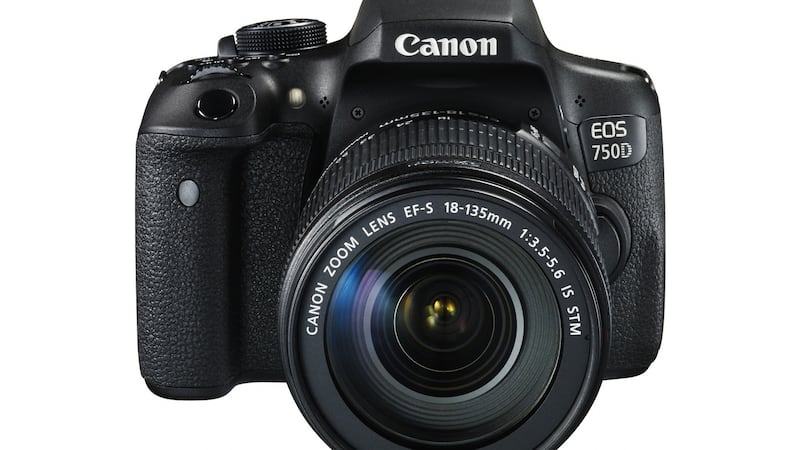Times change. And they change all the time. When Billy Stickland was taking photographs at the 1986 World Cup in Mexico, he needed everything short of a carrier pigeon to get them published.
He would take a snap in Mexico City, hand the package to someone who knew someone in the Air France desk at the airport, have it flown to Paris, have it passed on to a pilot going to Heathrow, have it picked up by someone from the Allsports agency and only then, days later, would it see the dark of a processing room.
Now, if he’s at a game and a goal is scored, the desk at Inpho Sports will have shot of it within three or four minutes. Not only is that possible, it’s pretty much non-negotiable. Websites, liveblogs, Twitter feeds – the beast has more mouths than ever before and they all need feeding. Fast.
"The technical advances in the equipment makes it easier to take these pictures now," Stickland says. "The Canon equipment we use is fantastic. It makes things possible now that just weren't in the past. It allows you to take so many more pictures now. Obviously, that has the knock-on effect that there is much more demand for them as well.
“Also, the number of photos we take now is so much higher than it was even five years ago. I was looking today – we have 786 pictures up on the site from the Ireland v England match on Saturday. The same match four years ago, we would have had a maximum of around 150.
“The change is dramatic, purely because the cameras are so good. With the Canon cameras, you can get a sequence of 10 or 15 shots of someone diving over the line for a try. The motor in the camera is so good that that’s possible. It isn’t so long since you would only have been able to take two or three frames of that moment.”
As with all advances in technology, the upsides and downsides come in a mix. Certainly, some of the skill has gone out of the game, especially when it comes to big live events. These sports are so commercially micro-managed now that all snappers are herded into the same spot and given the same angle to shoot from – and all with the same weapons in their hand. Originality is stymied. Imagination counts for less and less. “The contribution that journalists and sports photographers make to the coverage of sport is absolutely enormous,” Stickland says. “And I don’t think that’s necessarily valued as much as it really should be. Sport has become much more professional and commercial in the past 15 years. It wasn’t always driven by that.
“The technology is so good that what it does is it equalises photographers. Because we’re all in the same position with the same technology, we’re always there the next day looking at the newspapers and going, ‘is that one of ours?’
“Everything is very much the same, whether it’s you taking it or the photographer standing a foot to your left. So what it does is it levels everything out. It gives an advantage to those who aren’t as good as others – and for those who are very good, they don’t stand out as much.”
Behind the lens: Billy Stickland on...
Tri-Athy (Photographer: Morgan Treacy)
Something like a triathlon is tricky to photograph because one minute you have a whole field of competitors and pretty soon they’re all strung out and separated. By the time they’re on to the bike part, you’ve lost the sense of this being a mass event. What Morgan did here was get an early vantage point that they would all pass under early in the swim and it works very well with all the pink hats against the dark background.
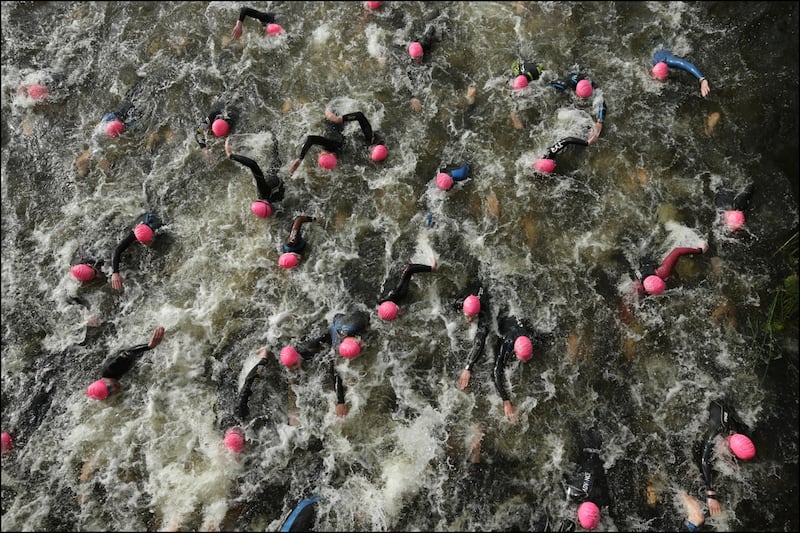
Shane O’Donnell, 2013 All-Ireland replay (Photographer: James Crombie)
Shane O’Donnell was the obvious story that day because he scored a hat-trick. Hurling is funny – it’s easy to take a good hurling photograph but it’s hard to take a great one. It makes for lovely action shots but it’s quite like tennis in that getting the exact moment and angle right for a brilliant picture is difficult.
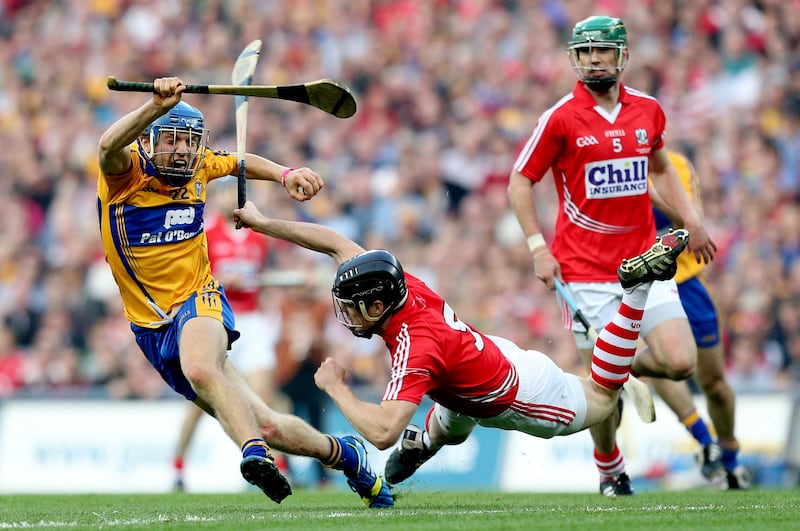
Michael Carruth, Barcelona Olympics (Photgrapher: James Meehan)
That goes back to a time when not everyone was corralled into the same position and James found himself a great vantage point. If that was in Rio last year, you’d have hundreds of versions of that. With boxing, you’re waiting for that split-second moment when the referee makes a decision and a hand goes in the air. But Michael jumped, which made it a much better picture.
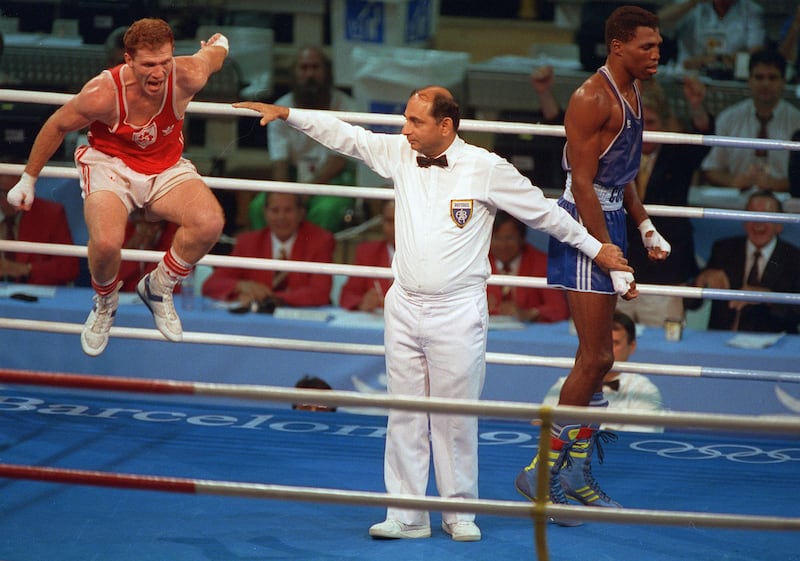
Clontarf rugby player (Photographer: Morgan Treacy)
That was taken by Morgan Treacy. It wasn’t an international or anything, it was just a muddy old wet day at an AIL game. It won awards and it did very well, I think because it sort of symbolises rugby in a way and people sort of saw it as getting the essence of it with all the mud and everything.
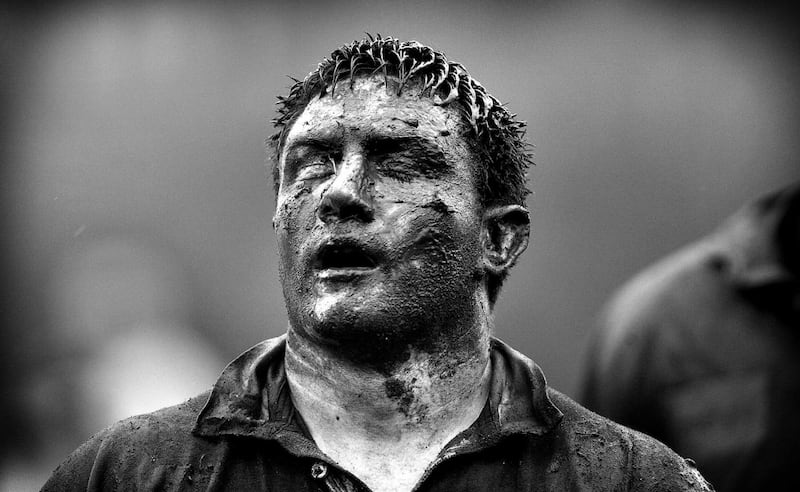
Competition: Win a Canon EOS 750D camera
Send us your best sporting snaps – your best action photo, your favourite home-grown sporting moment or that last-gasp effort before the finish line.
To celebrate the 30th anniversary of the EOS camera system, Canon and The Irish Times sports team are giving away a Canon EOS 750D camera.
Send your favourite snaps to sportspics@irishtimes.com. Terms and Conditions apply, see irishtimes.com/sportspics for details.
Competition closes on April 14th, 2017.
